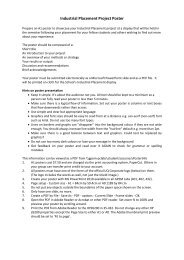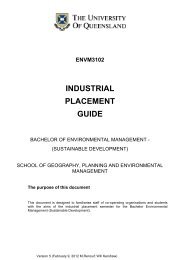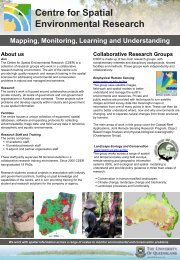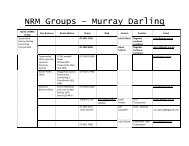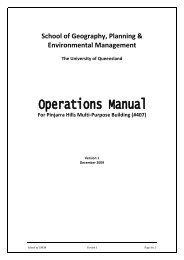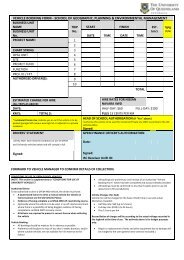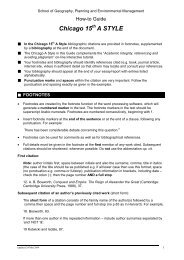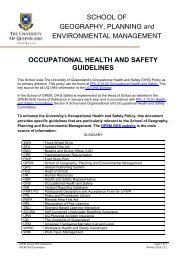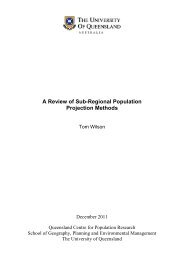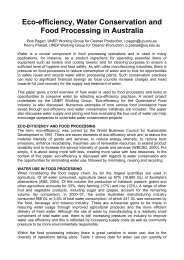Conserving Biodiversity in Brigalow Regrowth - School of ...
Conserving Biodiversity in Brigalow Regrowth - School of ...
Conserving Biodiversity in Brigalow Regrowth - School of ...
You also want an ePaper? Increase the reach of your titles
YUMPU automatically turns print PDFs into web optimized ePapers that Google loves.
CONSERVING BIODIVERSITY IN BRIGALOW LANDSCAPES<br />
Types <strong>of</strong> landscapes<br />
We have outl<strong>in</strong>ed many <strong>of</strong> the th<strong>in</strong>gs you can do to help encourage wildlife on your property. But no-one can<br />
do everyth<strong>in</strong>g. What are the most important th<strong>in</strong>gs for wildlife? In part, the answer depends on what sort <strong>of</strong><br />
landscape you are deal<strong>in</strong>g with. Below we list the highest-priority management actions for some examples<br />
<strong>of</strong> different landscape types.<br />
Management Priorities:<br />
High cover landscape<br />
Ma<strong>in</strong>ta<strong>in</strong> habitat condition:<br />
• ma<strong>in</strong>ta<strong>in</strong> low graz<strong>in</strong>g pressure<br />
• control weeds<br />
• control exotic animals<br />
• avoid remov<strong>in</strong>g habitat like fallen timber<br />
moderate cover (connected) landscape<br />
Increase small habitat patch size and l<strong>in</strong>ear patch widths by buffer<strong>in</strong>g exist<strong>in</strong>g<br />
patches with regrowth<br />
Ma<strong>in</strong>ta<strong>in</strong> habitat condition:<br />
• ma<strong>in</strong>ta<strong>in</strong> low graz<strong>in</strong>g pressure<br />
• control weeds<br />
• control exotic animals<br />
• avoid remov<strong>in</strong>g habitat like fallen timber<br />
• allow regrowth for long periods <strong>of</strong> time (decades)<br />
MODERATE COVER (DISCONNECTED) LANDSCAPE<br />
Increase connectivity:<br />
• Reta<strong>in</strong> regrowth to connect nearby patches to one another<br />
Ma<strong>in</strong>ta<strong>in</strong> habitat condition:<br />
• ma<strong>in</strong>ta<strong>in</strong> low graz<strong>in</strong>g pressure<br />
• control weeds<br />
• control exotic animals<br />
• avoid remov<strong>in</strong>g habitat like fallen timber<br />
• allow regrowth for long periods <strong>of</strong> time (decades)<br />
LOW COVER LANDSCAPE<br />
Increase habitat amount:<br />
• <strong>in</strong>crease patch sizes by reta<strong>in</strong><strong>in</strong>g a buffer <strong>of</strong> regrowth vegetation<br />
• create more habitat patches by reta<strong>in</strong><strong>in</strong>g regrowth vegetation<br />
Increase connectivity:<br />
• reta<strong>in</strong> regrowth to connect nearby patches to one another<br />
Ma<strong>in</strong>ta<strong>in</strong> habitat condition:<br />
• ma<strong>in</strong>ta<strong>in</strong> low graz<strong>in</strong>g pressure<br />
• control weeds<br />
• control exotic animals<br />
• avoid remov<strong>in</strong>g habitat like fallen timber<br />
Remnant vegetation<br />
Old regrowth<br />
Young regrowth<br />
Cleared land<br />
Medium aged regrowth<br />
23



